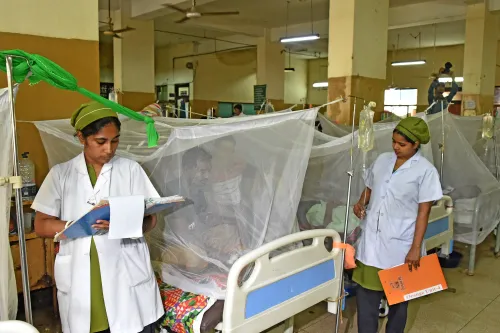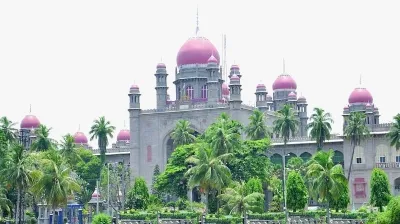Will GST 2.0 Ignite Growth in Punjab's Economy?

Synopsis
Key Takeaways
- GST reduction from 12% to 5% enhances affordability for key sectors.
- Boosts local artisans and MSME workers by improving market competitiveness.
- Stimulates domestic demand, leading to increased sales and exports.
- Supports rural employment through enhanced production.
- Preserves Punjab’s cultural heritage while fostering economic growth.
New Delhi, Oct 7 (NationPress) The recent reduction in GST rates from 12 percent to 5 percent for textiles, handicrafts, footwear, metalware, food, dairy, and bicycles is set to significantly enhance Punjab’s economy. By lowering costs, these adjustments render products more accessible, stimulate domestic consumption, increase exports, and boost competitiveness across vital sectors, as stated in an official announcement on Tuesday.
These reforms play a crucial role in improving livelihoods for thousands of artisans, farmers, and MSME workers, formalizing supply chains, and preserving Punjab’s rich cultural and industrial heritage.
Punjab is home to a vibrant textile ecosystem, featuring the entire value chain from raw material sourcing to apparel manufacturing. It is also a notable exporter of clothing, with products such as GI-tagged phulkari embroidery from Amritsar and Patiala, woolen shawls and stoles, hand-block printed fabrics from Malerkotla and Ludhiana, and women's cotton kurtas providing livelihoods to numerous artisans while appealing to diverse markets.
With textiles now taxed at 5 percent instead of 12 percent, Punjabi textiles have become more affordable and competitive in both domestic and international markets. This tax relief is expected to lower costs, encourage demand, boost sales, and strengthen exports, directly benefiting artisans and weavers who are the backbone of this industry.
The traditional Punjabi Jutti, crafted by skilled leather artisans and family-run units mainly in Patiala, Amritsar, and Fazilka, employs approximately 15,000 workers across key clusters. The industry caters to various markets, from ethnic fashion and wedding attire to souvenirs and designer brands. Boutique exports reach regions like the UK and Canada, showcasing this craftsmanship worldwide. The GST reduction from 12 percent to 5 percent offers a substantial uplift to this sector.
Punjab is also renowned for its handicrafts and wooden products, celebrated globally. These products now benefit from the GST cut to 5 percent. In Hoshiarpur and Patiala, traditional carpenters and artisan families produce exquisite handcrafted wooden items, employing around 8,000 craftsmen.
In Amritsar, small-scale artisans, many of whom are women, create traditional wooden lacquer toys, employing about 3,000 skilled workers. These toys are marketed in ethnic toy markets, handicraft fairs, exhibitions, and toy stores, with potential for niche handcrafted toy exports, which will become more competitive due to the GST reduction.
Punjab is famous for its traditional brass and copper utensil manufacturing techniques. Additionally, the state also has a steel kitchen utensil industry. Most of the metalware and utensils industry has experienced a GST rate decrease from 12 percent to 5 percent, which bolsters competitiveness and supports metal artisan clusters.
Jalandhar and Ludhiana host a thriving cluster of MSMEs that produce stainless steel wares for households, commercial kitchens, retail outlets, and online platforms. Employing over 25,000 workers, this industry also contributes to exports of small appliances, making it a vital part of Punjab’s industrial framework. The GST reduction from 12 percent to 5 percent has provided significant relief to this sector. Lower input and output taxes alleviate the cost burden on manufacturers, enhancing overall competitiveness.
Punjab is a major producer of various agricultural and food commodities in India, including milk, butter, ghee, curd, cheese, UHT milk, infant food, dairy whitener, and chocolate. The GST rate reduction from 12 percent to 5 percent on several food and agricultural products allows local and small-scale producers to benefit from lower production costs, improved profit margins, and increased competitiveness in both domestic and niche export markets.
This tax relief promotes greater production, supports livelihoods, and strengthens the state’s economy, ensuring that traditional products like papad and wadi continue to thrive while sustaining rural employment. A wide range of pickles and preserves for specialty food outlets, honey, and honey products will also gain from these changes.
Similarly, the GST rate cut will invigorate Punjab’s dairy sector. Rural producers and milk cooperatives are central to paneer (cottage cheese) production, employing over 40,000 individuals in milk processing. Paneer is a staple for households, sweet shops, food processors, and the HoReCa (Hotel, Restaurant, and Cafe/Catering) industry, while exports, though limited, are on the rise in frozen form.
Ludhiana and Amritsar are significant centers for dairy-based mithai, predominantly produced by family-run sweet shops, often involving women. This sector employs over 10,000 workers and caters to festivals, weddings, gifting markets, tourism, and bulk buyers such as sweet brands, airlines, and retailers. The growing demand also comes from diaspora gift packs, enhancing the industry’s domestic and international appeal.
The GST reduction from 12 percent to 5 percent is also set to boost Punjab’s bicycle manufacturing, centered in Ludhiana, with both large factories and small MSME units producing bicycles. This industry provides direct and indirect employment to over 40,000 individuals, meeting national demand for school and utility bicycles. Key buyers include school schemes and mobility start-ups, with export opportunities expanding across South Asia and Africa.









